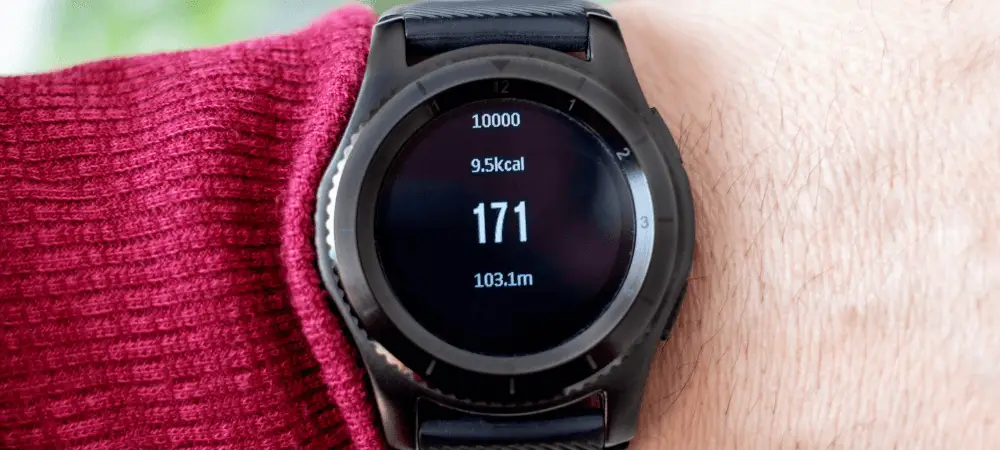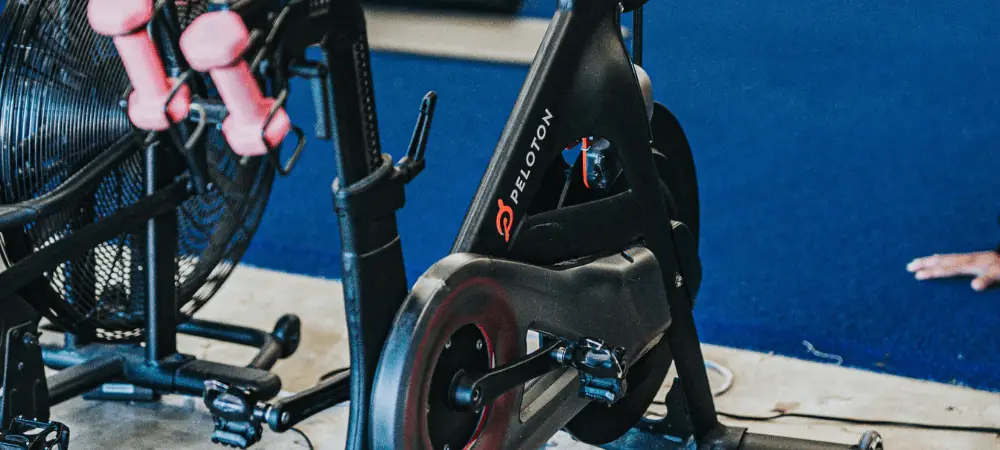Peloton is one of the most famous home fitness platforms in the world. It has gained significant recognition and popularity in the fitness industry. It offers many home workouts and incredibly high-tech fitness equipment like Peloton Bike, Peloton Tread and Peloton Row.
Peloton equipment is famous for tracking a wide selection of fitness metrics, including calories burned. This article will share information about how to track Peloton calories burned during a workout and how many calories you can burn overall.
Table of Contents
Calorie Calculator for Peloton Calories Burned
Discover the Peloton Ride Calorie Calculator, a simple online tool designed to estimate your calorie burn during Peloton rides.
Created by SportsCalorie for their readers, this user-friendly calculator considers factors like gender, age, height, and workout duration to provide an approximate calorie expenditure.
While individual metabolism and fitness levels vary, this tool offers a useful estimate for tracking your efforts. Just input your details – gender, age, height (in centimeters), and workout duration – and hit “Calculate.”
The calculator factors in gender-specific metabolic differences and uses a basic formula to estimate calories burned.
Remember, this is a general estimation, not a professional advice substitute. Your metabolic rate, workout intensity, and overall health influence calorie burn. For example, if you’re choosing less intensive workouts then you will burn fewer calories over same time period, but more intense workout.
Understanding Calories and Their Role in Fitness
Calories are units of energy, and in the context of diet and exercise, they refer to the energy obtained from food and the energy expended during physical activities.
Managing the balance between the calories you consume and the calories you burn is essential for weight control and overall fitness. Exercise is one of the most effective ways to burn calories, and knowing how many calories are burned during different workouts can help set and achieve fitness goals. If you eat more than you’re able to burn, you will end up gaining weight. Tracking calories will help you understand whether you lose weight or not.
An Overview of Peloton Workouts
Peloton offers many workouts, with cycling classes being the most popular. However, their platform also includes strength training, yoga, running, and more, catering to various fitness levels and goals.
- Cycling classes: High-intensity rides varying in duration and theme, with live or on-demand classes available.
- Strength training: Focused on building muscle through weight lifting and bodyweight exercises.
- Yoga: Classes aimed at improving flexibility, balance, and mental well-being.
- Running: Options for treadmill and outdoor running, with structured programs and challenges.
- Others: This includes meditation, stretching, and boot camp classes.
Which Peloton Ride Burns The Most Calories? (10 Classes Explored)
Discovering the most calorie-burning Peloton ride can be an exciting endeavor. However, it’s important to note that calorie expenditure varies due to multiple factors. Here’s a breakdown of 10 different classes, ranked from highest to lowest in average calories burned:
- HIIT (High-Intensity Interval Training) Ride
- Climb Ride
- Power Zone Max Ride
- Tabata Rides
- Power Zone Endurance Ride
- Pro Cyclist Ride
- Music-Themed Ride
- Low Impact Ride
- Warm-Up Ride
- Cool Down Ride
For those seeking the ultimate challenge, we’ve got you covered. Our 2023 article highlights the hardest Peloton classes. This ranking isn’t just based on the workouts but also incorporates participants’ personal feedback. Classes perceived as more intense tend to lead to greater calorie burns. Dive into our article to explore the toughest Peloton rides of the year – it’s a valuable resource for those aiming to maximize their calorie-burning potential.

The Factors that Affect Calories Burned During Peloton Workouts
The number of calories burned during a workout is influenced by personal attributes, workout specifics, and additional factors. Understanding these elements can help individuals better gauge their calorie expenditure and tailor their fitness routines to meet their goals.
Personal Attributes:
- Age: Age plays a role in metabolism, which can affect calorie burn. Generally, younger individuals might burn calories more efficiently, but metabolism naturally decreases with age.
- Weight: Weight affects the amount of energy required to move the body. Heavier individuals typically burn more calories during the same workout than lighter individuals because it requires more effort to perform the same movements.
- Fitness Level: An individual’s fitness level determines their cardiovascular efficiency and overall stamina. Fit individuals often burn more calories due to increased muscle mass and improved cardiovascular function.
Workout Specifics:
- Duration: The longer the workout, the more calories you’ll likely burn. Extended periods of physical activity result in a higher total energy expenditure.
- Intensity: Intensity is a significant determinant of calorie burn. Higher-intensity workouts, like HIIT or interval training, increase heart and metabolic rates, leading to more calories burned during and after the workout.
- Type of Workout: Different workouts engage various muscle groups. Cardiovascular exercises like running or cycling burn calories primarily through sustained movement. At the same time, strength training builds muscle mass, which boosts overall metabolism.
Additional Factors:
- Resistance Settings: In activities like cycling or rowing, adjusting resistance levels increases the effort required to complete each movement, subsequently increasing calorie burn. If Peloton resistance not working, you can fix it yourself. If you’re not sure how to do it, read our guide.
- Upper-Body Movements: Exercises that involve upper-body movements, such as boxing or incorporating weights, engage more muscle groups, leading to a higher overall calorie burn.
- It’s crucial to note that while these factors provide a framework for estimating calorie burn, individual variation is significant. Tracking devices and fitness apps can provide rough estimates. Still, they might need to capture the full complexity of your unique metabolism and physiology. Ultimately, the best way to gauge calorie burn is by observing trends in your personal progress over time. Regardless of the specific numbers, regular exercise offers many health benefits beyond calorie count.
How To Increase the Average Amount of Calories Burned in Any Peloton Class
Maximizing calorie burn is possible by customizing your workouts. You can progressively increase the intensity and duration, incorporate high-intensity intervals, and combine different workouts. Also, utilizing Peloton’s features like resistance adjustment and monitoring heart rate can contribute to a more effective workout.

Peloton Calories Burned Accuracy: Does Peloton Underestimate or Overestimate Calories?
The calorie count displayed by Peloton, like with many fitness equipments, is an approximation rather than an absolute value. It relies on algorithms and metrics that might only be universally accurate for some users. While the numbers provided can be helpful as a guideline, it’s crucial to view them with a degree of skepticism.
Various factors contribute to the discrepancy between the estimated calorie burn and actual values. Individual metabolism, fitness level, and even variables like body composition can influence how many calories are truly burned during a workout. As a result, it’s wise to regard the Peloton calorie count as an estimation rather than a precise measurement.
Utilizing a sports watch or fitness tracker can be advantageous for those seeking a more refined estimate. These devices use a combination of heart rate monitoring and motion tracking to provide a more personalized calorie burn estimate. Not only can this minimize overestimation, but it can also offer a closer approximation of the calories expended during your Peloton sessions.
Based on our experience, we recommend incorporating a fitness tracker into your Peloton routine. While the Peloton estimate is a good starting point, a dedicated fitness tracker can help you better understand your individual calorie burn. Remember, the ultimate goal is to quantify calories and enjoy the numerous health benefits of consistent physical activity.
How Does Peloton Calculate Calories Burned?
Peloton uses an algorithm that considers your age, weight, heart rate, and workout intensity to estimate calories burned. The accuracy of this estimate can be improved by regularly updating your profile information and using a heart rate monitor.
Peloton Calories Burned vs Apple Watch (Plus Other Methods of Estimating)
There can be a discrepancy when comparing the calorie estimate from Peloton to that of Apple Watch or other fitness trackers. Apple Watch factors in your heart rate more dynamically and may incorporate other sensors for a different estimation. It’s good practice to choose one method as your baseline and stick to it for consistency in tracking.
Why Calories Burned on Peloton Isn’t As Important As Consistency
While it’s motivating to see the calories burned, it’s essential to remember that consistent efforts over time are more important. Building and sticking to a routine, steadily increasing the challenge and focusing on overall health improvements often bring more sustainable and meaningful results than merely chasing calorie numbers.
Conclusion
Peloton offers a plethora of workouts, with cycling classes being the most renowned. The calories burned during these classes can vary widely based on age, weight, intensity, and class type. While knowing the number of calories burned is beneficial, focusing on consistency and overall fitness improvements is important. Whether you’re a seasoned Peloton user or considering embarking on your Peloton journey, understanding how Peloton calculates calories burned and using this information to tailor your workouts can be an invaluable tool in achieving your fitness goals.
Frequently Asked Questions (FAQ):
How Many Calories Do I Burn In A 30-Minute Peloton Ride?
On average, a person might burn between 200-400 calories during a 30-minute ride, depending on weight, age, and workout intensity.
How Many Calories Does A 20-Minute Peloton Ride Burn?
In a 20-minute Peloton ride, a person may burn approximately 130-300 calories.
How long does it take to burn 500 calories on Peloton?
Burning 500 calories might take anywhere from 40 minutes to over an hour, depending on the intensity and personal attributes.
What is the longest Peloton ride?
Peloton offers a range of class lengths. The longest single-session rides typically go up to 90 minutes. Still, members sometimes do back-to-back classes for extended workouts.
Who is the hardest Peloton instructor?
The difficulty of an instructor can be subjective and vary based on personal preference. Some members find instructors like Robin Arzón or Alex Toussaint particularly challenging.
Does Peloton Cycling Burn Fat?
Yes, cycling on Peloton can burn fat. Engaging in consistent, moderate to high-intensity workouts can put you in a calorie deficit necessary for fat loss.

